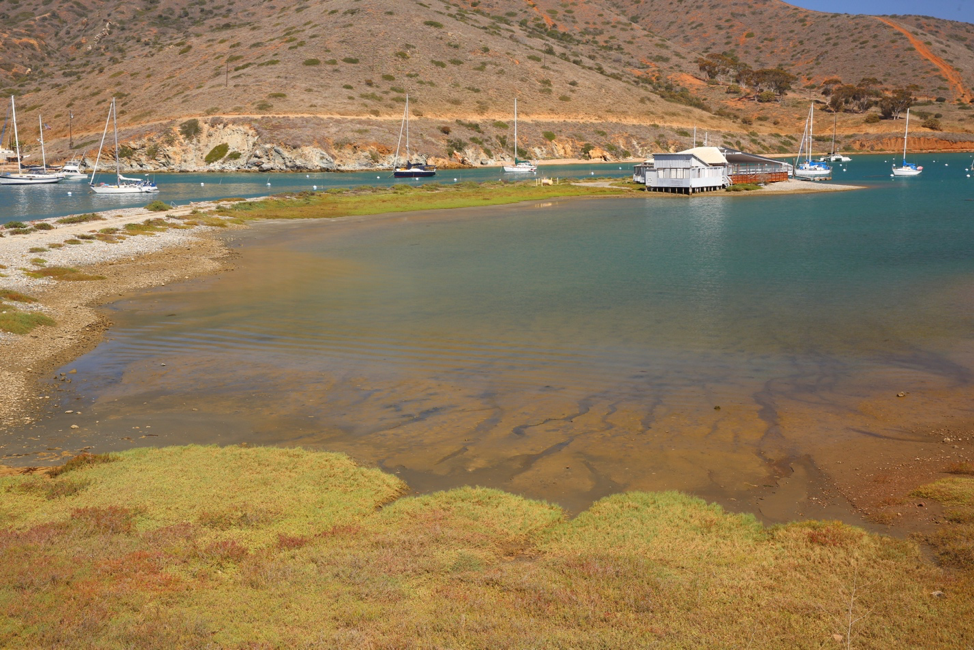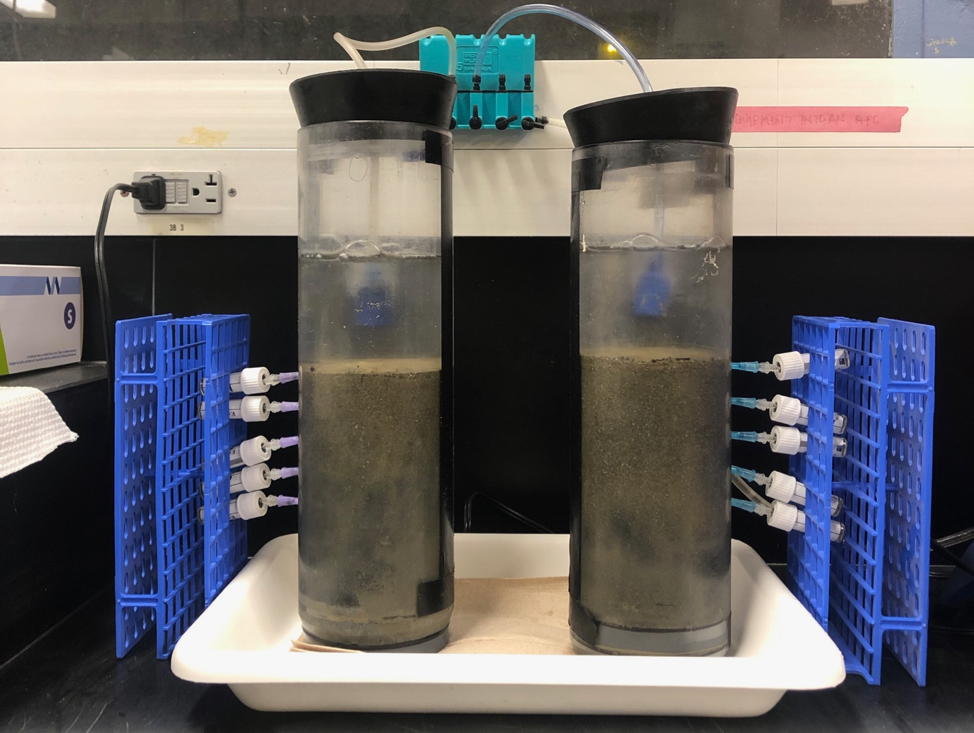By: Bingran Cheng
Greetings science lovers! I am Bing, a PhD candidate in the department of Marine Biology and Biological Oceanography at USC. My research focus is microbial ecology and biogeochemistry. In essence, I study microorganisms (bacteria and archaea) in natural environments, particularly marine sediment. I examine how microbes ingeniously adapt to constantly changing environmental conditions and how they powerfully engineer and shape their habitat.
My research involves a fair amount of field work. Luckily for me, there is an ideal sampling location in Catalina Harbor, easily accessible with lots of microbial activities. Throughout my PhD years, supported by the Wrigley Summer Fellowship, I was able to journey to Catalina island, conduct field campaigns, and take advantage of the amazing research facility at the Wrigley Marine Science Center. My work at Wrigley has been an integral part of my thesis, and I’m excited to share it with you!
Marine sediments harbor a remarkable abundance of microorganisms. In coastal regions, approximately 1 billion microbes reside in every cm3 of surface sediments. Marine sediments, by our standard, are not ideal living habitats: cold, dark, and mostly devoid of oxygen, so how do microbes thrive there?
Microbes, like all other living organisms, generate energy through respiration, however, oxygen is absent in the majority of marine sediments. Instead, anaerobic microbes are able to utilize nitrate, metal oxides, sulfate, or carbon dioxide as terminal electron accepters (similar to the role oxygen plays). These electron accepters are not evenly distributed, and they greatly affect microbial community compositions. For example, where there is a copious supply of a particular substrate, a microbial community that can utilize that substrate is generally anticipated to be abundant. When environment changes, the microbial communities follow. Therefore, fluctuating environmental conditions result in shifts in microbial communities and natural selection favors those that are adaptable to constant changes.
Luckily for most microbes, they are by no means “one-trick” ponies. Environmental microorganisms usually arm themselves with alternative modes of metabolisms. A prime example of such are sulfate reducers (which grow on sulfate) are capable of growth on metal oxides as well. This ability to adapt increases their chance of survival and provides them with a competitive advantage where resources are scarce. When all available resources are exhausted in the immediate surrounding other measures are taken.
One strategy is to slow down metabolism and “weather the storm”, so to speak. When there is not enough substrate to maintain high cell growth and reproduction, instead of generating new cell material, microbes invest most of their energy towards maintenance, such as internal homeostasis, DNA repair, defense, etc. In extreme conditions, when the environment is not conducive and resources are absent, cells can become dormant. When the condition becomes favorable again, the cells can revitalize themselves.
On the other end of the spectrum, the “extroverts”, allocate energy to environmental sensing by constantly monitoring changes in substrate levels in the environment, transducing the signals into the cell and regulating cell activities accordingly. One type of these intricately coordinated processes is cell motility/chemotaxis. A chemotactic cell has the ability to move away from harmful environments and towards more desirable conditions. The focus of my research this summer is to investigate this cell behavior in marine sediments.
Cell motility in marine sediments has rarely been studied because it has long been observed that the majority of benthic microbes are attached to sediment particles. My thesis work has unveiled a highly diverse and active microbial community that are free-living in the pore space between the sediment particles. In my study the free-living cells, though less abundant than the particle-attached cells, have showed a much higher level of catabolic activities than the latter. One possible explanation is that chemotaxis lends great force to these cells and enables them to outcompete their sessile neighbors. The goal of my summer is to test this hypothesis by evaluating the percentage of motile cells in the porewater and investigating potential stimuli for chemotaxis that are present in their natural habitat.
The experimental setup is fairly straightforward. I will collect parallel sediment cores from Catalina Harbor and bring them back to the lab immediately. From one of the cores, I will extract the porewater from different depths and filter out all of the microorganisms. Syringes filled with cell-free porewater from a specific depth will be connected to needles and then inserted into an intact core at corresponding depths. After 4h of incubation, the number of cells that have swam into the needle-syringe complex (an index for potential of cell motility), will be counted under the microscope. Assays for chemotactic stimuli will be conducted similarly, with cell-free porewater in the syringe amended with potential substrates including nitrate, oxidized iron and simple organic carbon.
Hopefully by the end of this summer, I can paint a much clearer picture of these smart microbes and their way of living. Stay tuned!


